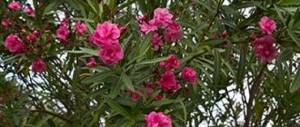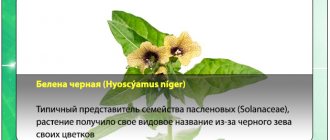Description
Indoor spurge includes a whole variety of species, so it is quite difficult to determine the characteristics most characteristic of a representative from each subspecies. There is one characteristic feature: the presence of milky sap in the stems of the plant. As for the appearance, as a rule, the leaves of this home flower are dotted with white veins. In addition, they are located at the top of the stem, which is a bit like the structure of palm plants. The height of milkweed can be varied, it all depends on the species. Some specimens grow without exceeding 20-30 cm, and some reach a height of up to two meters. The presence of leaves is not always characteristic of such a flower. There are many species that have stems that stretch upward. They may even have spines, but this again depends directly on which subspecies of the Euphorbiaceae family the specimen you purchased belongs to.
Where does spurge currently grow in nature? It prefers the humid climate of tropical countries in Asia and Africa, and develops well in the Mediterranean. The south of Russia is also the optimal region for the active growth of the flower. You can meet him in the fields or along the roads. In general, the plant is considered unpretentious. By providing it with all the necessary conditions, you will be able to observe how intensively the flower develops.
First aid for poisoning
If milkweed juice does get into your body, you need to call an ambulance immediately! Before the doctors arrive you should:
- Lay the victim on the bed and try to provide him with physical rest.
- Ensure cleansing of the body from harmful compounds by offering the patient 100 g of activated carbon 80 - 100 g or a saline laxative.
- Give the patient alkaline mineral water, milk or jelly to drink to reduce the harm from toxic substances to the stomach.
Important! Do not touch the skin with hands stained with plant juice.
Kinds
Perhaps it is not for nothing that the Euphorbiaceae family is called one of the most numerous. Data may vary, but the number of species belonging to this group varies from 800 to 2000. Not all of them are indoor plants. However, even here their diversity is simply amazing. Therefore, before looking for information on how to care for milkweed in general, you need to figure out which types are considered the most popular and can decorate your home without any extra effort on your part. There are several of the most common types of milkweed:
- bordered. An annual that grows approximately 70 cm in height. It is actively grown at home. But if we talk about the most favorable environment for it in nature, these are, of course, mountain slopes. Here, bordered spurge grows densely, gradually creating impenetrable thickets. The plant got its name from the small white inflorescences with which spurge is dotted;
- white-veined. This houseplant is characterized by a large ribbed stem from which beautiful dark green leaves emerge. Moreover, during the development of the plant, the leaf plates in the upper zone are constantly renewed, while the lower, older ones gradually die off. Under natural conditions, such a flower can reach 1.5 m in height. Another characteristic feature of white-veined milkweed is the presence of small, inconspicuous flowers;
- multifloral. The 70-centimeter perennial will decorate any garden. The shape of the plant can be adjusted independently; a spherical flower looks very beautiful. In addition, with the onset of warmth, bright yellow flowers with a greenish tint bloom on it;
- mile. This is a shrub covered with thorns. Oblong leaves grow from the top of the stems, and this plant is notable for the presence of bright bracts of white, pink or yellow flowers. This type of milkweed is popularly called crown of thorns.
It is quite popular among flower growers. Interestingly, the flowering period of this plant begins from the moment it reaches a height of 25 cm. Caring for milkweed Milya is especially important in the summer. At this time, it requires proper lighting, abundant watering and fertilization. In winter, when the flower is in a state of calm and gaining strength for the next flowering season, the volume of watering and fertilizing is reduced; - triangular. This flower grows quite intensively; three years after you acquire the shoot, it reaches a height of 1 m. Over time, branches appear on the stems. The shape of the stems is triangular, which is where this type of milkweed gets its name. Over time, the flower becomes quite tall, but requires additional support. Therefore, when replanting, it is better to give preference to a tall flower pot, and about half of it should be filled with drainage. Otherwise, this plant is unpretentious.
Sometimes you might have heard that milkweed is also called a type of cactus. Yes, some species of the Euphorbiaceae family somewhat resemble cacti, but they have nothing to do with them.
Prevention
The spurge weed will successfully spread throughout the area without taking preventive measures.
The main method is digging up the soil and then mulching it. During work, you need to remove all the roots and make sure that no parts of the weed remain in the ground.
Inorganic substances as mulch can be purchased in stores. These include spunbonds or breathable films.
It is recommended to use available materials as organic mulch: sawdust, leaves, chopped straw or cardboard. To limit weed growth, gardeners recommend covering the area with newspapers.
A water-alcohol solution in a ratio of 1:10 helps remove the milkweed weed from the site. The resulting substance is poured onto the beds where plants are planned to be planted next year.
Growing
How to grow indoor spurge flower? Of course, it is recommended to create a favorable microclimate around the plant. Remember that any variety of milkweed requires good lighting, so place the flowerpot with the plant in a place that receives sunlight all day. In summer, sometimes you can somewhat limit the amount of sunlight you receive, for example, during the peak of the heat, cover the window with blinds or curtains.
But when it comes to caring for cactus-like milkweed, rest assured: direct light will not harm it. However, among the entire species diversity of Euphorbiaceae, there are also those indoor flowers that can be significantly harmed by excessive lighting. White veined or Mila - these plants may even leave burns. What do you need to know about temperature?
The flower adapts well to temperature fluctuations, but cool room temperature is considered optimal for it. When ventilating, refrain from drafts; spurge does not respond well to such measures.
Moisture is another essential point when it comes to providing proper care for any indoor plant. Interestingly, most species of milkweed, despite the fact that their homeland is considered a tropical climate, prefer low levels of humidity. It is necessary to spray only those plants whose stems produce leaves. If, instead, your indoor spurge has triangular stems with spines, excess moisture is not necessary here at all. As for watering, it should not be frequent. In this case, the flower perceives a lack of water much less painfully than its excess. When moisture stagnates in the pot, the spurge becomes weak, more susceptible to various infections or parasites, but most importantly, its root system gradually rots. It’s better to wait until the top layer of soil noticeably dries out, and only then water the flower again.
Another significant point is fertilizers. When is the best time to feed milkweed? The optimal period is spring and summer, while the flower is actively developing. Do not oversaturate the soil with minerals: accumulations of salts will negatively affect the activity of the plant. Use universal mixtures for ornamental foliage plants if you are growing milkweed that has leaf blades. If it is a cactus-shaped succulent, it is worth purchasing fertilizers for cacti.
How to get rid of milkweed in the garden
The weed is found not only in gardeners' plots, but also in fields, forests and swamps. The plant has amazing abilities to adapt to unfavorable factors, so it is difficult to remove it from the territory.
Controlling milkweed in the garden is a necessary measure: the branched root system of the weed interferes with the normal growth of other crops. When it is removed, a liquid is released that leaves burns and negatively affects the growth and development of other plants. Also, the roots of the weed quickly absorb all useful substances from the soil, which interferes with the normal functioning of garden crops.
Mechanical method
To destroy the spurge weed in the garden, it is recommended to begin all work in the spring, when vital processes in the plant are activated.
The mechanical method involves removing the stem and rhizome. If you leave the underground part of the weed in the soil, it will safely grow again. It is problematic to remove mature tall plants mechanically: the roots of milkweed quickly branch and grow deep underground. As a handy tool, preference should be given to a shovel.
Important! The more often you cut off the above-ground part of milkweed, the faster the root system branches, which does not allow you to completely destroy the weed.
To reduce the risk of the plant appearing next year, it is recommended to plow the soil deeply in late autumn in order to maximize damage to the roots remaining in the soil.
Important! All work must be carried out using protection: thick gloves. In addition to the poisonous sap, many types of milkweed have thorns that cause discomfort.
Chemical method
If it is impossible to remove spurge from potatoes by mechanical action, the use of various herbicides is permissible.
Preparations that destroy any weeds are Task, Titus or Napalm. Products have also been developed aimed at removing milkweed from the garden: Lapis lazuli, Dicamba or Roundup.
Important! It is recommended to use any product after preliminary digging of the soil.
To get rid of milkweed on potatoes, Lazurit is used in calm weather. For 1 hectare of land, a solution in a concentration of 1-1.5 kg is required. With double treatment, you first need to apply it to the soil before the appearance of milkweeds, and then when the cultivated plants reach 5 cm. The dosage of the drug for repeated spraying is 0.3 kg/ha.
To process tomatoes, it is necessary to spray the soil before transplanting the seedlings into open ground. The dosage of the weed killer is 10 g per 3 liters of water.
Important! Lapis Lazuli can be used on areas with potatoes and tomatoes, so you should prevent the herbicide from getting on nearby crops.
Dicamba is recommended for treating areas with grain crops when the spurge weed has formed 2-4 leaves. For 1 hectare of land, 1.5-2 liters of diluted solution are required. The procedure should be carried out no later than 40 days before harvesting the grass.
The drug Dicamba, penetrating the leaf plate and root system, destroys the plant. The use of the product does not have a negative effect on plants grown on treated soil: Dicamba completely decomposes in the soil during the growing season.
Important! When Dicamba is used simultaneously with a sulfonylurea, the drug reduces the effect of the substance to a minimum without reducing the effectiveness of the action.
The herbicide Roundup has a wide range of applications. They can be used to process grain and vegetable plants, citrus fruits and fruit crops. A solution for milkweed weeds is prepared by diluting 100 ml of herbicide in 10 liters of water. The consumption of the drug varies depending on the area being treated and the crop being grown, and is 1.3-4.0 l/ha.
Among the broad-spectrum herbicides, Napalm is used. To do this, 80-120 ml of the substance are diluted in 10 liters of water, and then the solution is spilled on the soil where planting is planned for the next year.
For 15 days after the procedure, the treated area is in quarantine and it is not recommended to visit it.
Basic principles of using chemicals:
- all work is carried out using a mask and gloves made of latex, rubber, and glasses;
- Recommended processing time is early morning or late evening (there should be no rain or strong wind);
- It is necessary to treat the soil or the weed directly with a diluted solution (if the substance gets on the cultivated crop, the plant dies or stops growing);
- After treating the area for the milkweed weed, all clothing must be washed and hands washed with soap;
- During treatment, it is prohibited to eat or drink water, rub your eyes or touch exposed skin;
- It is prohibited to use products that have expired.
When using any of the spurge weed remedies, you must follow the instructions. It is not recommended to mix several preparations or plant plants immediately after treating the soil.
Important! In the first year after treatment, the soil should not be used for growing garden crops. To restore the soil, it is recommended to sow lupine or mustard.
Folk recipes
Most gardeners, having compared photos of milkweed in the garden and weeds on the plot, try to get rid of the plant using folk remedies for fear of harming the soil and crops.
Effective methods:
- sprinkle the area with salt and water (this procedure prevents the growth of milkweed);
- spray acetic acid on the stems and leaves of the plant, avoiding contact of the substance with other crops;
- soil treatment with soda solution.
Important! For a positive result, it is necessary to combine several methods of killing the milkweed.
Reproduction
Euphorbia is a houseplant that can be grown at home. Flower growers actively use three methods of flower propagation: using seeds, cuttings or dividing the bush. For example, you prefer the cutting method.
To do this, the shoots are carefully cut off and immediately placed in water. This is necessary in order to stop the secretion of milky fluid. After this, the cut ends are sprinkled with coal and planted in the ground. If you have collected seeds from your milkweed, sow them in a special container with fertilized substrate and wait for them to germinate.
Benefits of milkweed honey
The benefits of milkweed flowers are manifested in their honey-bearing properties. Fresh honey from this plant is a brown mass, similar in consistency to syrup. Over time, it hardens and acquires a dense, thick texture. This honey owes its dark hue to its high iodine content, which makes it especially useful if a person has problems with the thyroid gland. In addition, the benefits of milkweed honey are that it increases the body's defenses and helps fight infections and harmful microorganisms. The beneficial properties of milkweed honey also apply to people with diseases of the cardiovascular system, chronic fatigue, and insomnia.
Benefits and harms
Euphorbia is considered effective in fighting skin infections or fungal growths. It can get rid of warts and cure eczema. However, the plant brings more than just benefits. The milky sap present in the veins of the flower causes burns and all kinds of irritation, in rare cases even poisoning (if the milk of the flower comes into contact with human skin in large quantities).
When replanting or pruning milkweed, do not forget about safety precautions: you should always work with gloves. If you were unable to prevent the plant juice from getting on your skin, immediately rinse the affected area with water. In general, the houseplant called Euphorbia is an unusual flower that will certainly stand out against the background of any home collection. Take proper care of it and you will be able to see the results very soon.
Possible consequences
In case of acute poisoning, a child develops symptoms of intoxication. The patient develops gastroenteritis, accompanied by symptoms such as:
- headache;
- uncontrollable vomiting;
- burning in the esophagus;
- bloating.
Intoxication occurs 12 hours after the poison is ingested. Sometimes the patient complains of dry mouth and thirst. Arrhythmia occurs and blood pressure decreases. Irregular heart rhythm and thready pulse are often observed.
If toxins enter the blood, the following symptoms develop:
- convulsions;
- movement disorders;
- loss of consciousness.
In some cases, young children fall into a coma. Unpleasant consequences occur in patients suffering from allergies. A small amount of euflorin causes Quincke's edema, sometimes sudden swelling of the larynx develops, and respiratory arrest occurs.
Positive qualities of milkweed according to feng shui
In the right place, spectacular spurge will not only decorate the interior, but will also benefit the home owners:
- A pot located near the front door will protect you from enemies and troubles, and will become a kind of shield and talisman for the family;
- A flowering plant in the living room will bring happiness and good luck into the house;
- A bush that stands near a computer or TV will absorb harmful radiation.
You can also keep the plant in the office - in this case, the milkweed bush will contribute to a successful career and rapid advancement up the career ladder. The possibility of receiving an unexpected bonus also increases significantly. Euphorbia improves relationships with superiors and colleagues, creates a positive emotional background, which has a good effect on performance.
What do they use?
Various parts of the prickly plant can be used for medicinal purposes. When preparing medications, it is recommended to be careful and use gloves.
Euphorbia juice
The caustic juice of milkweed is poisonous, but it is often used for medicinal purposes, using the medicinal properties of the plant. A small amount of milk is applied to skin wounds that have been festering for a long time and do not heal. The juice will sting and the sensation is unpleasant, but the product can completely remove harmful bacteria from the cut and protect the wound from fungi.
The juice burns warts and treats old calluses. A prickly succulent will help get rid of freckles and whiten your skin.
Leaves and stems
In ancient times, the medicinal leaves of milkweed were dried along with the mashed or finely chopped stem. The result was a kind of powder that was sprinkled on open wounds or made into a tincture, which was used during outbreaks of infectious diseases, such as chickenpox.
Roots
Alcohol tinctures are made from the roots of the plant, which can alleviate suffering during gout attacks. A decoction of the roots was used for gastrointestinal problems, epileptic seizures and problems with the nervous system. The products should be used in small quantities; an overdose can cause allergic reactions.
Seeds
From the seeds of the plant you can obtain oil, which is successfully used in folk medicine for cosmetic purposes. Oil improves hair health and prevents hair loss. Among the peoples of Africa it is used as a laxative.









